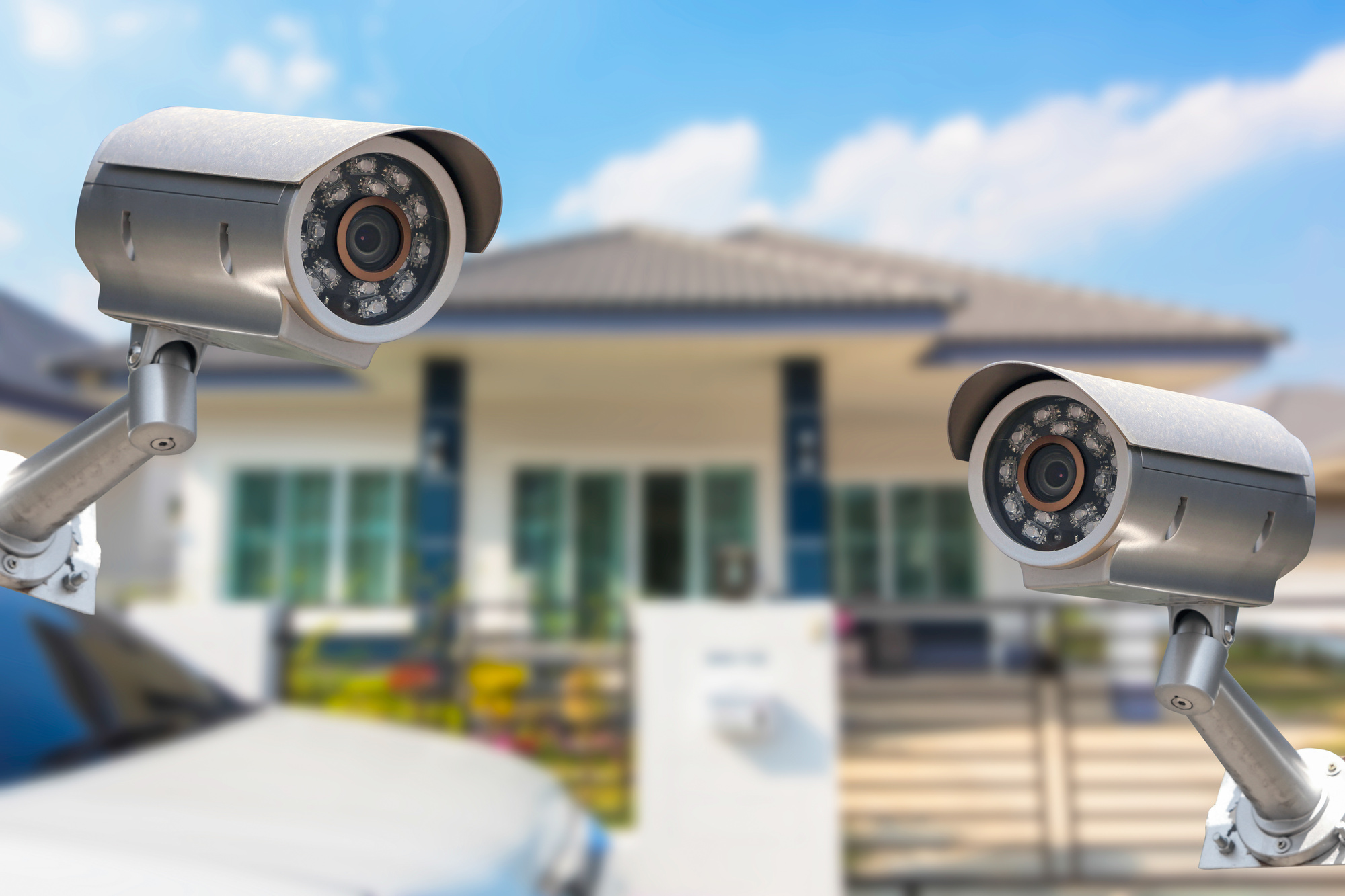While you often think of homes as the target of burglars, businesses are also susceptible. Businesses are the target of 23% of robberies and 28% of burglaries. That puts your employees, products, equipment, cash, and anything else on site at risk and could cause significant financial losses.
Your business location can impact the safety of your building, but any business can be target of burglars. Taking steps to protect your building is important even if your business is in a generally safe part of town.
Keep reading to learn how to protect your business from burglary.
Upgrade Your Security System
One of the first things to do when figuring out how to protect your small business is to have a look at your security system. Window and door alarms and breaking glass sensors that connect to a central security monitoring service are a smart investment for all businesses. Motion sensors within the business also help detect unwelcome visitors inside your building.
Audible alarms when someone breaks in or opens a door or window can scare off a burglar before they take anything. The alarm can also alert people in the area that something is happening, so they can alert authorities as well.
High-quality security cameras that capture clear video can deter burglars. If your business gets broken into, you’ll have clear footage that can be used to help identify the individuals involved. Ensure all doors are covered with security cameras as well as entrances to high-security areas within the building.
Install Stronger Doors
Assess your current doors and windows to determine if they’re a weakness that could make it easy for people to break into your business. Steel frames and steel doors offer strong entry protection because they make forced entry more difficult.
Doors with hinge pins on the exterior are also a risk. If the hinge pins can be removed, a burglar can remove the door and enter the building that way.
Limit the View Indoors
A burglar might scout out your location for a long time before actually breaking in. If they can easily see inside your business, they’re better able to see the things available to steal. They can also better plan how to enter and move around inside your business.
Window tinting can allow your employees to still see outside and get natural light while blocking the view into the building from the outside. Solid doors without windows, especially in back areas, can also limit what potential burglars can learn before breaking into your business.
Add Physical Barriers
Physical barriers can be an important part of business burglary prevention. Fences and gates with controlled access around your facility keep unwanted vehicles from getting too close. It’s difficult for someone to steal items from your business if they can’t get their vehicle close to the door.
If you have customers who come to your location, you might consider fencing the back lots, delivery docks, storage for company vehicles, and other areas where your customers don’t need access. Leave a front lot and the main entrance accessible without passing through security to make it easier for your customers.
Roll-down gates covering doors and windows on the front of the building can prevent unauthorized access. While some business owners feel like these safeguards send the message that the area is unsafe, they can be very effective in protecting your business.
Light Your Building Well
Lighting inside and outside the building discourages would-be burglars from breaking into your business, especially at night when it’s more of a target.
A well-lit exterior not only looks good, but it can also deter burglars from approaching. It’s much more difficult to break into a building when it’s fully lit outdoors because it’s not easy to stay out of view. Focus especially on points of entry, such as doors and windows on all sides of the building.
Interior lights at night might make burglars wonder if someone is inside. This can be even more effective if you use timers to randomly adjust which lights are on at different points in the night. Seeing lights turn off and on gives the illusion that someone is working even if they’re not.
Indoor lights also make it easier for a burglar to be spotted when they’re inside the building. The potential for being seen could discourage burglars.
Lighting in your parking lots makes it more difficult for a burglar to hide their vehicle. The parking lot lighting also keeps your employees safer when going to and from their vehicles early in the morning or late at night when it’s dark.
Remove Hiding Spots
Prevent business burglary by making it difficult for thieves to hide. Shrubs, sheds, decorations, and other large items near your building give criminals a place to hide when they approach your building. These structures can be especially helpful to burglars when they’re near doors and windows because they can hide while they gain entrance through those points.
Hiding spots can also put your employees at risk. Burglars could hide and wait for employees to approach the building in the morning. They can use the employees to force their way into the building.
Walk around the building to look for potential hiding spots behind seemingly innocent features. Trim back shrubs to make it easier to see the doors and windows of your building from the street. Consider relocating other items that provide cover.
Other outdoor items could be used to help break in. For example, a ladder that gives roof access could lead burglars to an easy entry point. Large, heavy items could be used to break glass or breach doors.
Create Lock and Security Policies
Having deadbolts, automatically locking doors, and other security features only works if your employees use them properly. Forgetting to engage locks leaves doors easier to breach. Propping open a door that locks automatically leaves a major gap where someone can slip in easily, even during the day.
Create standards for when doors should be locked and who is responsible for locking them. Make it a routine to check the locks on doors and windows every day before the close of business. These extra steps don’t take long, but they could easily fix a gap in security that leaves your business exposed.
Control Keys and Access Codes
Limiting who has keys and knowledge of codes for the security system can help reduce the risk of break ins. The more keys that are floating around, the greater the risk of one getting lost or falling into the wrong hands.
Determine who truly needs a copy of a key or the codes to enter the building. Ensure the keys are printed with “do not duplicate” to prevent anyone from making an unauthorized copy. Ensure those who receive keys and codes know they can’t share them with anyone else.
When someone leaves the company, whether they resign or get fired, change locks and codes. You might not think your former employee is a threat, but it’s always the safest plan to prevent any access by ex-employees.
You can also better control access by using ID cards that double as access cards. You can restrict access to various parts of the building for each person using their ID. When someone leaves the company, you can easily deactivate that person’s ID card without needing to reset alarm codes or changing the locks.
Watch for Internal Theft
While you’re strengthening your business from outside attacks, don’t forget about the internal threats that all businesses face. Employee theft costs businesses $50 billion every year in the U.S.
Small businesses are often the target of internal theft. Don’t assume because you have a small team that they won’t try to steal from you.
Having multiple people involved in financial processes, such as payroll, inventory, bookkeeping, receiving, and purchasing, helps prevent employee theft or fraud. Dividing responsibilities, such as having one person receive money and another record it, can cut down on embezzlement.
Stay actively involved in all processes in your business. Periodically check in on the records for all aspects of running the business to look for obvious inconsistencies. Internal and external audit processes can also help catch internal fraud.
Secure Valuables
Stopping outsiders from entering the building is ideal, but if a breach happens, you can reduce your losses by making your most valuable items more difficult to access. A vault or safe that’s secured to the floor can protect high-value items during and after business hours.
Even less valuable items, such as files and office supplies, benefit from locks. Having those areas locked can help reduce internal theft. They can also deter nervous thieves who just want to get in and out quickly.
Build Neighborhood Connections
Another way to protect your business from burglary is to build strong connections with your business neighbors and other community members. Getting to know people in the community makes it easier to spot someone who doesn’t belong or who acts suspicious.
Teaming up with fellow business owners in the area allows you to look out for one another. You can get to know the typical schedules for deliveries, employee arrivals, and other regular activities of other businesses. When you spot something different, you can check into it to make sure it’s not suspicious.
Working with local law enforcement in a positive way can also benefit your business. They can get to know what’s normal for your business, and they might be able to let you know if there’s increased burglary activity in the area.
Protect Your Business Now
Taking steps to protect your business helps you save money in losses and time dealing with the cleanup. It also reduces disruptions to your business and helps your employees feel secure.
Check out our archives for more helpful information.

